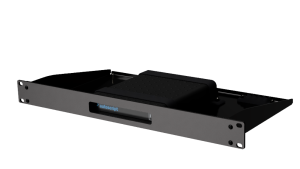Do you have any questions?
We will be happy to help you.
Prepare a Prompter script correctly
Progl+Gerlach Rental wants your filming, video recordings or events with a teleprompter to run as smoothly and pleasantly as possible. Thorough preparation is essential to ensure that the script read from the teleprompter is perfect.
To save you time, avoid unrest and ensure that the speaker is better received by the audience, we recommend that you follow these 7 tips when creating a prompter script:
1. use language that is easy to understand
To improve the audience’s understanding, it is recommended to use simple language with short sentences.
Everyday communication with other people usually involves simple and easy-to-understand language that differs from that used in books, reports and other written works.
Language that is easy to understand is best understood by the audience and ensures that your content is understood. Clear communication is perceived more professionally by your listeners.
2. do not forget any speaker pauses in the script
By including regular pauses in the script, you prevent the speaker from losing their breath and falling into a monotone.
A pause can also be used as a stylistic device to emphasize a point.”
Tip:
Write pauses in round brackets (pause) and color the letters red.
3. write instructions for non-verbal communication in the script
Add instructions for non-verbal communication to the script. These can be simple gestures such as (smile), cues to change pace (slow)/(faster) or a call to action (point)/(hold up object) – simply anything that can reinforce the speaker’s words.
Pro Tip:
Write non-verbal instructions in round brackets (smile) and color the letters red.
Pro Tip:
Avoid emojis in text. Even if these appear very modern, they interrupt the reading flow and disturb the reader’s concentration, as has been confirmed in tests. For this reason, emojis, however “nice” they may be, are not supported by WinPlus-IP and are not displayed.
4. highlight particularly important words
Emphasize particularly important words – use typographical aids such as: Underline, italicize, capitalize and/or color words or letters.
This is a great support for the speaker.
Info:
Professional teleprompter software will transfer your formatting from your script to the teleprompter in exactly the same way.
Tip:
Use bright colors such as yellow, turquoise, light green, etc. Red should be reserved for “instructions” (see tips 1 and 2).
5. avoid abbreviations
Avoid the use of abbreviations. Each time an abbreviation is used, the speaker must briefly consider how the word is pronounced.
Even common abbreviations can hinder the flow of speech and cause unnecessary difficulties for the speaker.
6. complicated words
The teleprompter script is only viewed by the speaker. Use this option to insert difficult words or stresses “as spoken” into the text to avoid stumbling blocks. Example: write “peu à peu” in the prompter as “pö a pö”.
7. write numbers correctly
If you are dealing with large numbers over a thousand, it is particularly important to write them in full with a separator in the text instead of presenting them as numbers.
This facilitates readability and comprehensibility
Example:
745,535,842,567 (try to pronounce this number correctly the first time)
better:
sevenhundred and forty-five billion/fivehundred and thirty-five million//eighthundred and forty-two thousand/five hundred and sixty-seven
Modern teleprompter software can import Microsoft Word files (.doc, .docx), Rich Text Format files (.rtf), text files (.txt) and PDF files (*.pdf).
Scripts for the teleprompter must not contain any columns, tables or graphics and should be given to the prompter operator without headers and footers if possible.
Important: If you use Word documents, you should complete the tracking process

